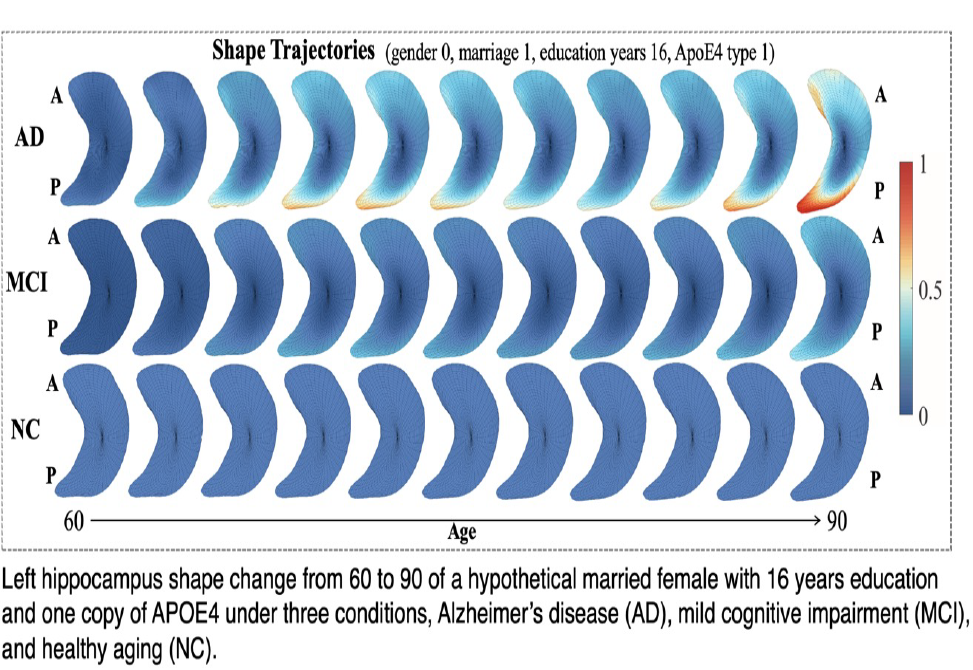Neurodegenerative disease discovery
April 28, 2023
New research uncovers link between neurogenerative disease and subcortical shape changes in the brain
A recent research led by Prof. Zhengwu Zhang from the Department of Statistics and Operations Research (STOR) at UNC-Chapel Hill uncovered how neurodegenerative diseases like Alzheimer’s can accelerate atrophy in subcortical brain regions in individuals aged 60-75, compared to the normal aging process.
Through a series of brain scans, size changes were visible in the lateral ventricle, which contains and helps circulate cerebrospinal fluid, and the hippocampus, which supports limbic system processing of emotion, memory and behavior.
These findings were published recently as a discussion paper in the Journal of American Statistics Association (JASA), one of the most prestigious statistical journals which only publishes a few discussion papers each year. In the paper, the research team introduced a new method called longitudinal elastic shape analysis (LESA) for examining changes in specific brain regions over time. This comprehensive framework consists of five key components: subcortical surface extraction, elastic shape analysis, principal components analysis (PCA) of shapes, continuous shape trajectory fitting, and shape-trajectory-on-scalar regression.
The study was a joint effort between the College of Arts and Gillings School of Global Public at UNC Chapel Hill and the Florida State University. The co-authors of the study include Zhengwu Zhang, PhD, assistant professor in STOR at UNC; Yuexuan Wu, a doctoral student in the Department of Statistics at FSU; Di Xiong, a visiting doctoral student in biostatistics at UNC; Anuj Srivastava, PhD, a professor of statistics at FSU; and two biostatistics professors, Joseph G. Ibrahim, PhD and Hongtu Zhu, PhD.
The team applied this innovative framework to study brain MRI scans of 2,275 individuals, analyzing a total of 9,628 shape surfaces. They found that the atrophy of subcortical regions begins early in life, around the age of 30, and accelerates after 60 years old. Furthermore, findings show that Alzheimer’s disease further speeds up this shrinkage in comparison to normal aging for those between 60 to 70 years old.
The LESA framework enables researchers to accurately identify shape changes on the subcortical surfaces. They discovered that atrophy of the hippocampus associated with Alzheimer’s disease primarily occurs in the back of the organ, which is where crucial parts, known as subfields CA1, CA1, CA2 and CA4, are located. In addition, both Alzheimer’s disease and genetic risk factors, specifically the presence of two genetic alleles called ApoE4, contribute to more severe atrophy of subcortical regions, such as hippocampus and lateral ventricle, during the aging process.
